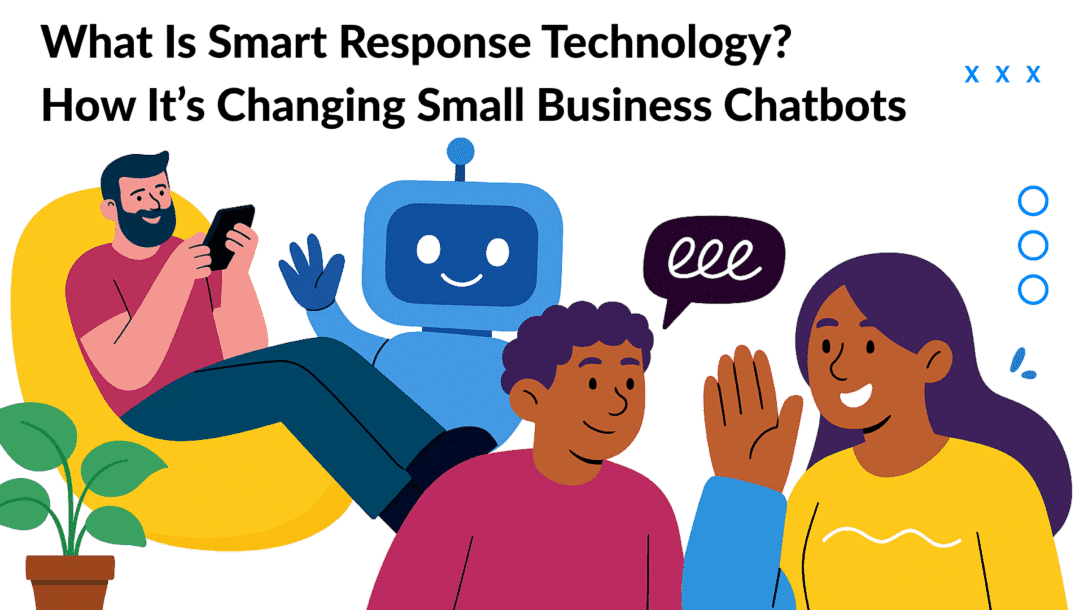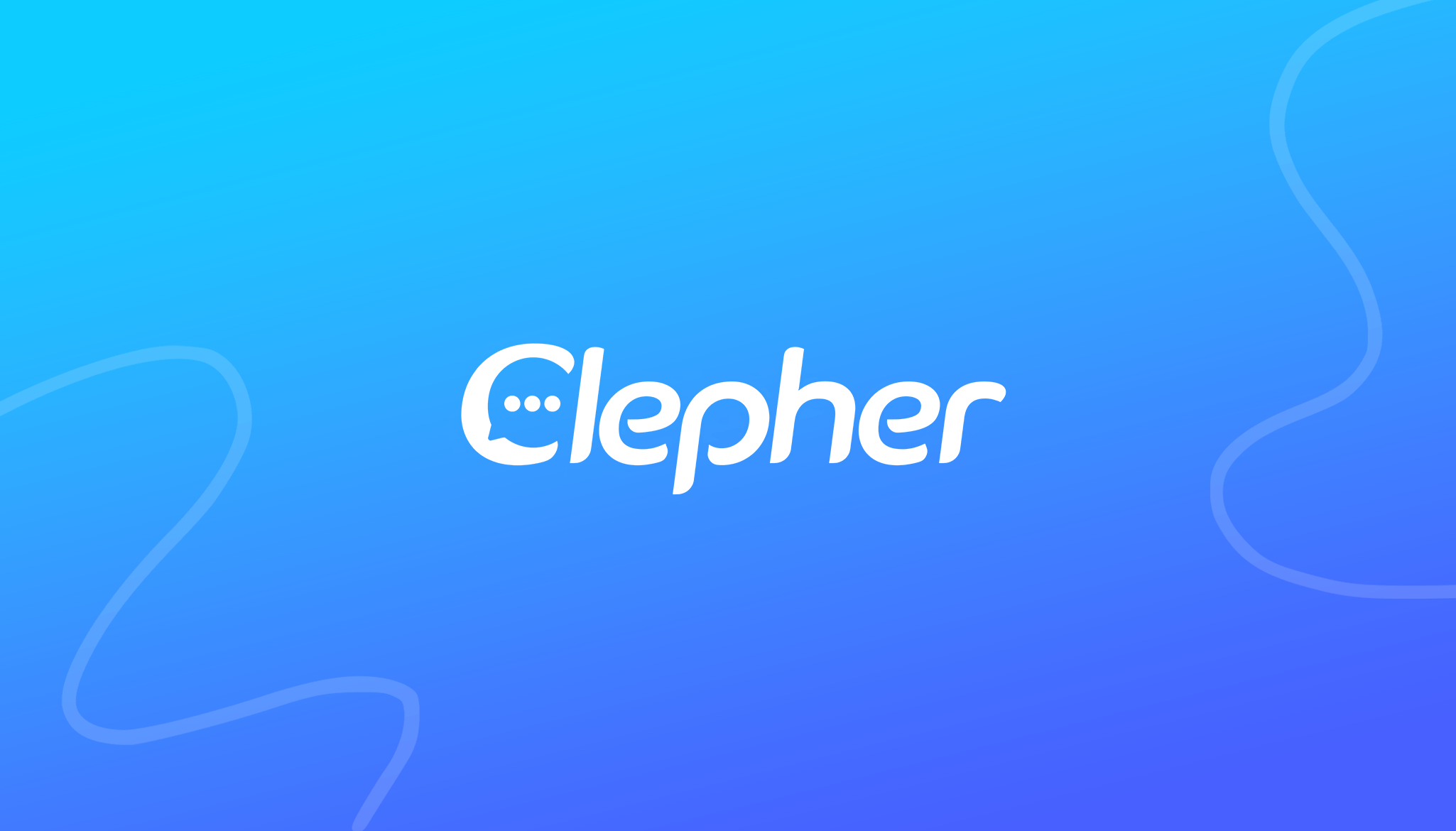Imagine this: 70% of customers expect real-time responses from brands. Yet, many small businesses still struggle to keep up. That’s where smart response technology comes in — an AI-driven chatbot evolution that helps businesses answer faster, smarter, and 24/7. Studies show businesses that implement smart chatbots can increase customer engagement by up to 80% and cut response times by over 50%.
But what exactly is smart response technology? In simple terms, it’s automation powered by artificial intelligence that understands user intent and context, offering relevant, timely replies without waiting on a human.
This tech is no longer just for big companies. Today, small businesses can use smart chatbots to build real relationships with customers, especially on platforms like Instagram and Facebook Messenger.
In this article, we’ll break down the evolution of smart response technology, explore how it’s impacting small businesses, and show you how to get started with tools like Clepher — a chatbot builder designed specifically for social media messaging.
Why It Matters for Small Businesses
Time is money. And for small businesses? Every minute counts.
You don’t have the luxury of big teams or massive budgets. That’s where smart response tech steps in—it works 24/7, costs less than a full-time employee, and never takes a day off.
It helps you:
- Reply instantly.
- Reduce workload.
- Capture more leads.
- Close sales faster.
And here’s the kicker: it makes your business feel bigger than it is.
With tools like Clepher, even a two-person startup can run like a Fortune 500.
Real-World Examples (That Aren’t Just Hype)
Let’s get real. This isn’t just “future of business” talk—it’s happening now.
- An eCommerce store set up automated responses for product questions using Clepher and saw a 35% drop in support tickets.
- A fitness coach used smart DMs to book 50% more free consultations without hiring a VA.
- A local agency automated lead follow-up, closing $10K in deals—while they were sleeping.
These aren’t unicorns. They’re regular businesses using smart response tech to work smarter, not harder.
And if they can do it? So can you.
How Does Smart Response Technology Work?
Let’s break it down without the tech jargon.
Smart response technology uses artificial intelligence (AI), machine learning, and natural language processing (NLP) to understand, predict, and respond fast.
Here’s what happens under the hood:
- Input received – A customer sends a message, fills a form, or asks a question.
- AI analyzes intent – The system doesn’t just look at the words. It looks at the meaning behind them. That’s NLP at work.
- Context matters – Is this a returning customer? Did they just abandon a cart? Smart systems take history into account.
- Best response triggered – Based on behavior, history, and tone, it fires off the perfect reply—automatically.
Think of it as Netflix’s recommendation engine, but for conversations.
The more data it gathers, the smarter it gets. That’s machine learning in action. Every interaction fine-tunes the system, helping it deliver faster, more accurate responses every time.
And the best part? Most of this tech plugs right into your website, Facebook Messenger, or CRM without needing a developer.
You just set the rules… and let it roll.
Benefits of Smart Response Technology (Beyond the Obvious)
Sure, automation sounds cool. But what do you really get out of it?
Let’s talk ROI. Real results.
1. Instant Replies = More Conversions
Consumers expect a reply in under 10 minutes. If you’re not fast, they bounce. Smart replies = sales saved.
2. Lower Support Costs
Hiring more reps? Expensive. Training them? Time-consuming. Smart response tech handles 80% of repetitive questions for a fraction of the cost.
3. Scalable Without Stress
Whether you’ve got 10 or 10,000 customers, the system doesn’t get tired. It handles volume like a pro.
4. Personalized at Scale
It’s not just fast—it’s smart. It can personalize responses using name, location, purchase history, and more. Feels human. Runs on autopilot.
5. Data You Can Act On
Every interaction is tracked. You see what questions come up most, what time users engage, and where they drop off. That’s insight you can use.
Bottom line: It boosts revenue, reduces cost, and improves customer experience. Triple win.
The Evolution of Smart Response Technology: From Simple Bots to AI Helpers
Chatbots have come a long way since their early days. Back in 2020, most chatbots were rule-based, meaning they followed fixed scripts and couldn’t handle unexpected questions. They could only respond to pre-set commands, making conversations feel robotic and frustrating.
Fast forward to 2025 — smart response technology leverages AI and natural language processing (NLP) to understand not just keywords but the meaning behind messages. This lets chatbots have fluid conversations, remember past interactions, and personalize responses based on user behavior.
For small businesses, this evolution means customers get quicker answers, better recommendations, and seamless experiences — all without the need for human intervention 24/7.
Smart Response Technology: 2020 vs 2025 — What’s Changed?
Let’s break down the major shifts over the past five years:
|
Feature |
2020: Traditional Chatbots |
2025: Smart Response Technology |
|
Core Tech |
Rule-based, script-driven |
AI-powered, natural language understanding |
|
Response Flexibility |
Fixed responses, limited to keywords |
Context-aware, dynamic conversations |
|
User Interaction Style |
Mostly button clicks or exact commands |
Free text, emojis, slang, and natural speech |
|
Personalization |
None or very limited |
Learns from past chats, customizes replies |
|
Channels Supported |
Mainly websites |
Instagram DMs, Facebook Messenger, WhatsApp |
|
Setup Complexity |
Developer-heavy, complex coding |
User-friendly drag-and-drop platforms (like Clepher) |
|
Learning & Adaptation |
Static scripts, no self-improvement |
Continuous learning improves over time |
|
24/7 Availability |
Basic automation with many dead ends |
Seamless, intelligent 24/7 support |
Why does this matter?
In 2020, chatbots were often frustrating. You’d hit a wall if you asked anything outside the script.
Now? Bots understand you better and can handle more complex needs. This means happier customers and less workload for businesses.
Chatbot Technology Today: The Clepher Example
When it comes to social media messaging, chatbots aren’t just about websites anymore.
Clepher is a great example of how smart response tech is specialized for platforms like Instagram and Facebook Messenger. These channels are where small businesses meet customers daily.
Clepher helps businesses automate replies to DMs, comments, and Story interactions — without coding. It understands common questions, sends personalized messages, and guides customers through sales or support flows.
What makes Clepher stand out?
- Built specifically for social messaging platforms, where customer engagement is highest.
- Easy drag-and-drop chatbot builder for non-tech users.
- Real-time analytics to help businesses improve their conversations.
By focusing on the channels where customers are already active, Clepher shows how smart response technology can be practical and highly effective for small businesses.
The Real Impact on Small Businesses: More Than Just Automation
Small businesses have limited resources. Customer service can easily get overwhelmed with repetitive questions — like “What are your hours?” or “Do you deliver?”
Smart response tech helps here in three key ways:
- Time Savings: Automate FAQs so you or your team don’t spend hours answering the same questions.
- Better Customer Experience: Instant replies keep customers happy and engaged — no waiting in line.
- Sales Growth: Faster answers often lead to quicker purchases and more conversions.
For example, a local boutique using a smart chatbot on Instagram can answer queries about product availability instantly, helping customers buy without delay. This frees the owner to focus on inventory or marketing instead of inbox overload.
How to Get Started With Smart Response Tech
Getting started isn’t as complicated as it seems. Follow these practical steps to build your first smart response chatbot:
1. Pick Your Most Active Platform
Where do your customers message you the most? Instagram DMs? Facebook Messenger? Start there.
Clepher specializes in these platforms, making setup straightforward.
2. Identify Top 5 Common Questions
Write down the questions you get repeatedly, like:
- What are your prices?
- What’s your return policy?
- Do you offer delivery?
- How can I book an appointment?
- Where is your store located?
These form the backbone of your chatbot’s initial knowledge.
3. Build Chat Flows Visually
With tools like Clepher, you drag and drop responses and decision paths.
For instance:
User asks about prices → Bot replies with pricing → Offers buttons to “Buy Now” or “Ask More”
No coding needed. It’s like designing a simple conversation map.
4. Test With Real Users
Ask a few customers or friends to chat with your bot.
Watch where they get stuck or confused.
Make improvements quickly.
5. Track Performance and Optimize
Use built-in analytics to see:
- How many users interact with your bot?
- Which questions are most asked?
- Are users completing sales through the bot?
Adjust your flows and responses based on real data.
Why Small Businesses Can’t Ignore This Anymore
Here’s the truth: AI adoption is transforming ecommerce, and small businesses are finally getting access to tools once reserved for big teams.
You no longer need a staff of 20 support agents to stay responsive.
You’re juggling sales, service, and marketing — often all at once.
That’s where smart response technology becomes your secret weapon.
You can greet new followers on Instagram.
Answer common questions without lifting a finger.
Offer support in the DMs, even at midnight.
And Clepher makes this dead simple.
- You don’t need to be a coder.
- No need for a full marketing department.
- You just need the right strategy — and a few smart automations to take care of the repetitive stuff.
Small business owners don’t need to work harder.
They need tech that works smarter.
Ethical Use of Smart Bots: It Matters
Let’s be honest — no one wants to talk to a pushy robot.
Smart response tech should help, not annoy.
So, how do you keep it ethical?
- Be transparent: Let users know they’re chatting with a bot.
- Make exit easy: Always offer an option to talk to a human.
- Avoid spam: Don’t flood inboxes with messages. Time your responses.
- Respect privacy: Don’t collect info you don’t need.
When used right, bots enhance the customer experience.
They reduce friction.
They guide, inform, and support — without replacing that human touch.
The goal is better conversations, not robotic overload.
Ethical Considerations: Using Smart Bots Responsibly
It’s easy to get carried away with automation. But customers value honesty and respect.
- Be transparent: Let users know they’re talking to a bot.
- Offer human fallback: Always provide an option to chat with a real person.
- Avoid spammy messages: Keep communication relevant and spaced out.
- Respect privacy: Don’t collect unnecessary data.
Smart bots should enhance the experience, not replace genuine connection.
The bigger picture here is about accessibility.
Smart response tech isn’t just for the big brands anymore.
It’s now a part of everyday business operations — and platforms like Clepher are making sure smaller companies can catch up and compete.
Frequently Asked Questions (FAQs)
Q: Can smart response tech really work for small businesses?
A: Absolutely. It helps manage customer inquiries, saves time, and boosts engagement without big budgets.
Q: Do I need coding skills to use this tech?
A: Not anymore. Platforms like Clepher are built for easy drag-and-drop chatbot creation.
Q: Which platforms support smart response bots?
A: Instagram, Facebook Messenger, and many others.
Q: Will a chatbot replace my team?
A: No. It handles repetitive tasks and frees your team to focus on complex issues.
The Bottom Line: Smart Response Technology Is Here to Stay
The chatbot landscape has transformed dramatically in five years. Today’s smart response technology is more intuitive, personalized, and easy to use than ever before.
For small businesses, this means improved customer experiences, saved time, and new growth opportunities — especially on social platforms where customers spend their time.
With tools like Clepher, smart response technology is no longer a luxury but a must-have for any business serious about customer engagement in 2025 and beyond.
Related Posts



